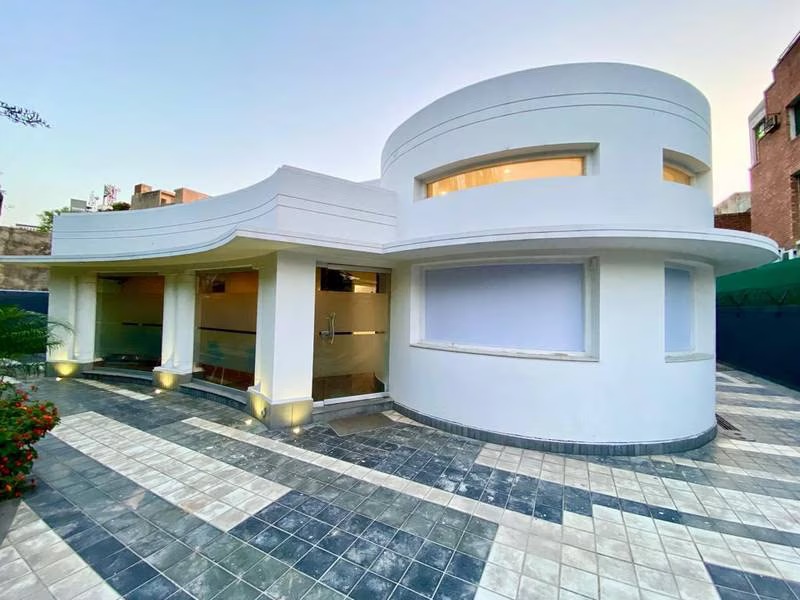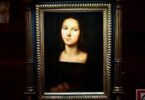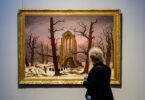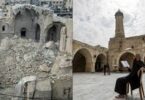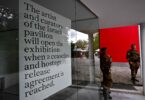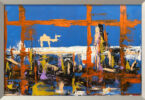Melissa Gronlund
Housed in a handsome colonial-era brick building, and operating continuously since 1875,Pakistan’s National College of Art has turned out some of the country’s best-known artists such as Imran Qureishi, Shahzia Sikander and, of a younger generation, Fahd Burki.
The Lahore institution anchors the Pakistani scene — but its success is also mixed. Many of its graduates struggle to find places to have exhibitions or ways to develop their practice after they graduate, in a city awash with artists but little infrastructure.
Longtime art collector Jawad Zia is now returning to the country to try and fill this “void”. Last weekend, he and Irfan Gul Dahri, an artist and curator, launched the exhibition space Numaish Gah. It will operate partly as a commercial gallery, with a roster of artists that it will represent Pakistan, and partly as a means of support for Pakistani artists, providing them with opportunities locally and internationally.
“Frankly, what I’ve noticed when I was collecting art was that in Lahore there was only one gallery I was dealing with, in Karachi there are only two galleries I’m dealing with, in Islamabad there’s only one,” he says.
“Why is it limited to just one or two? It’s a big country. It’s a big art scene. There are about 60 or 80 graduates every year in fine art alone. So where are they going? Well, most don’t continue with their practice. They get disheartened because there is no representation or available platforms. These gaps have to be closed.”
Numaish Gah opens in an Art Deco villa in Gulberg, a central area of Lahore. Zia renovated the inside of the house, moving walls around to create three spacious galleries, while also taking care to preserve the original Art Deco character of the site.
He came across the villa a few months ago and moved with speed to rent from its current owners. By luck, its owner is a respectable business family in Lahore, and his team supported in making the renovations as Zia flew back and forth between his home in Dubai and Lahore to coordinate.
:quality(70)/cloudfront-eu-central-1.images.arcpublishing.com/thenational/WOK5WFRC55HXVF7YZ5FC7QLJRM.jpg)
Zia is convinced of the importance that a gallery plays in the art ecosystem. Many artists in Pakistan sell their work directly via Instagram, using the platform to promote themselves and their work. But Instagram’s utility is limited, he says, as it does not enable artists to make the connections abroad with museums, galleries or art fairs that would translate into institutional visibility or higher sales.
And the flipside — artists who leave Lahore to become international art stars — means that local art galleries do not benefit from their success. “What you’re doing is you’re skipping a beat,” Zia says. Artists need a gallery “that is going to promote and nurture them”.
“When artists see that there is nobody who’s nurturing them, they try to find their own ways and sometimes to make a mark, but other times they fall behind or remain stagnant,” he adds.
The gallery represents a sort of homecoming for the collector. He was born in Pakistan, but has spent most of his life living, studying and working in the UAE, the UK and the US. He has lived in Dubai for the past 20 years.
He started collecting art in the 2000s. He and his wife Lyna now have about 300 works in their collection, of mainly South Asian origin, and more recently African. For the past seven years, they have also helped support the local Pakistani art scene, providing scholarships for artists to study either at the NCA or at institutions abroad.
Zia and Dahri plan for Numaish Gah to triangulate between the local scene and stakeholders abroad, with partnerships with other galleries and institutions. Dahri will lead the artistic programme, not only showing the gallery’s artists aboard but also bringing international artists to Pakistan. Their next show is a collaboration between East Asian and Pakistani artists, with a “sequel” planned later in Malaysia.
:quality(70)/cloudfront-eu-central-1.images.arcpublishing.com/thenational/PENMJKQCB5BZZFLQDET5EIJZVE.jpg)
The first exhibition, curated by Dahri, focuses on calligraphy, mixing contemporary work by artists such as Ghulam Mohammed, Abid Aslam and Shah Abdullah Alamee, with older works from Zia’s collection, such as one by Sadequain.
Titled Likha Howa Hay (It’s Written) the show also comments on the authority of the written word — that one believes what is written down, rather than trusting what is said. It also reflects the long history of Pakistani art, nodding to the tradition from which contemporary art has emerged.
Dahri also notes that calligraphy was an appropriate subject for Ramadan, as he sets out a programme that responds to the Islamic calendar and the public of Lahore.
“An exhibition is not just a display of art,” he says. “It has to speak something — it has to tell a story, it has to raise an issue, it has to develop a dialogue. It has to share and accept the diverse backgrounds that people have and their beliefs. So, why not develop that dialogue? That’s why I have been very keen to pick up specific time slots in the year and curate in these slots so we can appreciate the diversity and a society which is more tolerant to all these things.”
Courtesy: thenationalnews

